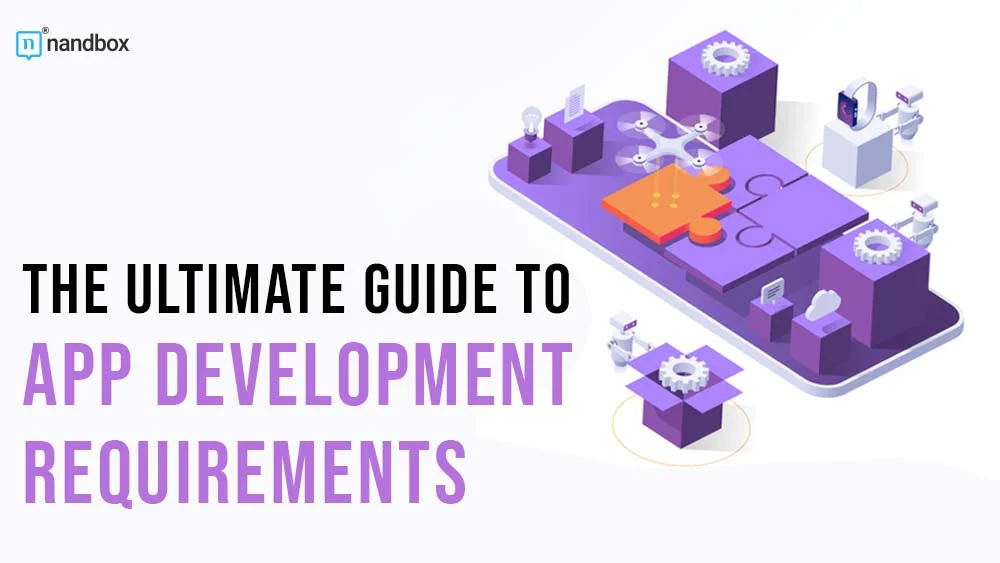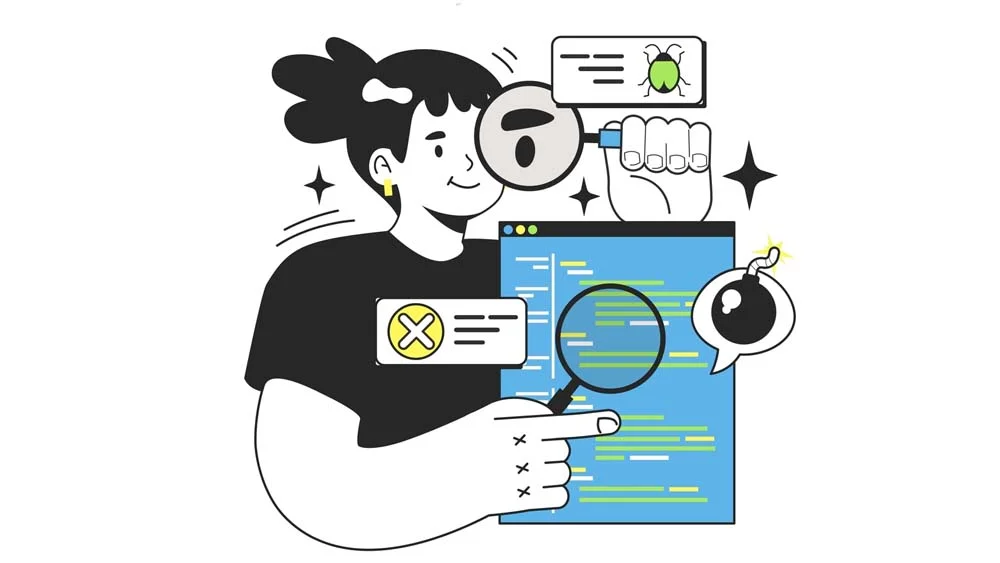App Development Requirements: All You Need to Know!
In today’s digital landscape, applications are playing a pivotal role in shaping our lives. They’re like the hands that are creating a whole new, advanced piece of pottery. The importance of applications in today’s technological era cannot be highlighted enough, even in a million guides like this one. Understanding all the app development requirements that you need to build an app is essential. This is a process that will help illuminate the path of app development for you. Additionally, help breathe life into your app’s idea. This guide will offer you everything you need to know. From coming up with an app idea to deploying a fully functional app of your own design.
We will navigate our way through the complexities of defining a lot of factors. Like user needs, selecting appropriate platforms, and integrating cutting-edge technologies. Additionally, we will explore the crucial considerations surrounding design aesthetics, coding languages, frameworks, and development methodologies. Something that will empower you with the right firearm of knowledge to make informed decisions that align with your app project goals. Delve deep with me in this guide to understand and learn all the requirements that your app idea will need to come to life.
Understanding Mobile App Development Requirements
The process of developing an app is a simple one to explain. It all starts with you having an idea. This idea is then implemented through various options and tools. Ones that you’ll be introduced to in this guide in a very efficient way. However, before choosing your app development methodology, you have to conduct thorough market research. One that will help you understand who your potential users are. It will also assist you in determining whether or not the market accepts your idea. What does that mean? It means that the current market has a myriad of applications that offer services in every industry that you might think of.
Something that kind of makes the process of coming up with a “new” app idea a bit challenging for app developers. Please don’t perceive this little P.S. as a cynical way of looking at things. This is just me addressing one concern that people tend to neglect. Don’t worry, though; even if your app idea has been implemented hundreds of times before, there is always a factor—one that I’ll mention later—that will help you stand out from the crowd. Below, I will be uncovering all the app development requirements and steps that you need to have and take in order to develop the app of your dreams efficiently!
Understand Your Idea and Validate It Through Market Research
I know that the word “understand” may sound a bit “obvious.” You may be wondering, “What makes the writer think that I don’t “understand” my app idea?” The thing here is that having an app idea is way different than understanding it. Understanding your idea means that you’ve got all your market facts and information straight. That you’re knowledgeable about what your potential app users love. It means that you know them. Their preferences, habits, issues, problems, personas, and, of course, demographics.
Understanding all of that will require you to conduct market research. One that involves analyzing target demographics, identifying market trends, and understanding user preferences and pain points. By gaining insights into the competitive landscape and emerging opportunities, developers can tailor their apps to meet user needs effectively, ensuring relevance, competitiveness, and user adoption in the ever-evolving app market.
There are various important phases involved in validating your app idea. Commence by carrying out market research in order to evaluate the level of competition and demand. It is important to understand the requirements and preferences of potential consumers; hence, it is important to get feedback from them through surveys, interviews, or prototypes. I want you to deal with the market you’re addressing as a puzzle. With your app playing the role of the missing piece that will complete the picture.
App Development Requirements: Choose Your App Development Method
Many factors, including the developer’s coding skills and the project requirements, go into making the crucial decision of which app development strategy to use. Developers can create complex capabilities suited to individual needs using traditional coding approaches, which offer unmatched flexibility and customization choices. This method, however, requires advanced programming skills, which may be out of reach for some people. On the other hand, no-code solutions offer user-friendly ways to build apps. These solutions use pre-built components and intuitive visual interfaces to make development faster.
By removing the barriers associated with traditional coding, these platforms make it possible for individuals without technical backgrounds to quickly bring their app ideas to life. Rapid prototype and iteration are made possible using no-code platforms, which favor speed and simplicity over traditional coding, which allows developers to implement complicated features with precision. To achieve the best results in app development, it’s important to consider technical competence, project scope, time limitations, and scalability goals while deciding between traditional coding and no-coding options.
Design Your App: Implement a Design That Attracts Users

In order to design an application that is appealing to potential users, it is necessary to do certain things. You should carefully combine aesthetics, functionality, and features that are centered on the user. In order to guarantee a smooth experience for the user, you should start by developing a user interface (UI) that is easy to understand and promotes simplicity and ease of navigation. To pique the audience’s interest and improve the usability of the website, incorporate visually appealing elements like vivid colors, a clean font, and interesting graphics. The performance of the application should be optimized across a variety of devices and screen sizes, so it is important to focus on responsive design concepts.
In addition, make functionality a top priority by incorporating features that cater to the particular requirements and problems that users have, providing value and making use of each interaction. To encourage user engagement and delight, it is important to incorporate interactive components such as animations and gestures. To iteratively develop the app, it is necessary to continuously collect feedback from users through beta testing and analytics. By putting an emphasis on the user experience and including appealing design elements, developers can create an application that not only draws users but also retains them, promoting long-term engagement and happiness.
App Development Requirements: Test Your App and Create a Prototype
During the app development lifecycle, the processes of testing an application and developing a prototype are both essential for your app’s success. During the testing phase, developers conduct exhaustive evaluations of the app’s functionality, usability, and performance. That is, across a wide range of devices and operating systems. The user acceptance testing (UAT), beta testing, and quality assurance (QA) checks that are carried out as part of this process are designed to locate and resolve any bugs, glitches, or usability issues that may have been present. Furthermore, the development of a prototype is an essential step in the process of visualizing and refining the design of the application as well as the user experience.
Developers are able to iteratively experiment with various layouts, features, and interactions through the use of prototypes. They also elicit input from stakeholders and end-users to verify that the prototypes correspond with the expectations and requirements of the target audience. Through thorough testing and prototyping, developers are able to reduce risks, improve user satisfaction, and maximize the overall efficacy and efficiency of the application. This paves the path for a successful launch and continuing progress in the highly competitive app market.
Finally! Launch Your App and Maintain on Enhancing It
The process of launching an app is only the first step in an endless pursuit of success. The key to keeping users engaged and staying relevant in a competitive market after an app’s first release is to regularly update and improve it. To keep up with customer expectations and technology developments, updates should resolve bugs, address user comments, and add new features on a regular basis. To evaluate the app’s effectiveness and find places for improvement, it’s helpful to keep an eye on key performance indicators (KPIs), including user retention, engagement metrics, and app store ratings.
Developers can also anticipate market shifts and rival moves by keeping up with news on industry trends and tactics. You can keep users informed about developments and cultivate a sense of community around the app using effective communication channels, including in-app notifications, social media, and email newsletters. Developers may build a devoted user base and make their app successful in the ever-changing digital world by putting customer pleasure first, listening to feedback, and making use of new technology.
Wrapping It Up!
Developing an app brings your business a variety of benefits. That is because applications are the language that planet Earth speaks. They are reshaping our lives to make them easier, streamlined, and enhanced. Apps are making a difference in our lives that we can actually leverage to our advantage. One only has to understand how and through which tools.
If you have an app idea and wish to implement it easily, I can help you with that. Our no-code native app builder, nandbox will help you build an app in no time. nandbox’s app builder relies on a simple drag-and-drop interface. One that simplifies the process of adding features and creating an app with seamless branding and design elements. Sign up for nandbox’s native no-code app builder to be provided with all the app development requirements that you will need.





